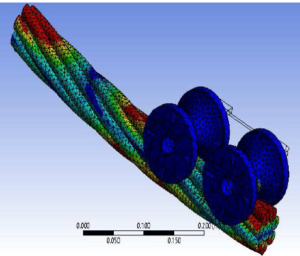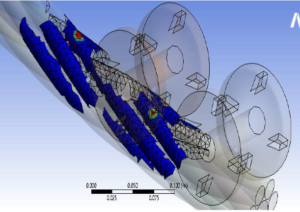
Integrated Analysis of Areal Transport Ropeway Cable Performance through Finite Element Method and Artificial Neural Network
Aerial ropeway transportation, as an innovative alternative to conventional ground-based public transit, holds significant potential, particularly in urban and metropolitan settings. The construction of urban aerial ropeway systems, however, is a substantial financial undertaking, necessitating substantial investment due to intricate engineering and economic considerations inherent in the process. This thesis aims to conduct qualitative and applied research to deepen our understanding of the capabilities and constraints associated with Aerial Ropeway Transport systems.

The research endeavors to address fundamental questions concerning the mechanical and physical behavior of Aerial Ropeway Transport systems. The outcomes of this investigation are expected to yield valuable insights that can contribute to the advancement of knowledge in the field, potentially informing future research initiatives.
To execute the simulation and parametric analysis of the Aerial Ropeway under load, a sophisticated combination of software tools was employed, including CATIA 5.1 for design, ANSYS 2022 R1 for finite element analysis, and MATLAB R2021a for computational modeling. This integrated approach facilitated a comprehensive analysis employing both artificial neural networks and finite element analysis.

The findings derived from ANSYS formed the basis for constructing a robust artificial neural network model within MATLAB. This model serves the purpose of performance forecasting, offering a predictive tool for key parameters. Recognizing the computational intensity of a full aerial ropeway transport simulation, the study emphasizes the practicality of employing simplified models for routine engineering work.
While a comprehensive simulation might be time-prohibitive, the use of simplified models proves effective in predicting critical parameters such as Total Deformation, Equivalent Stress, Equivalent Elastic Strain, Directional Deformation, Strain Energy, Frictional Stress, Force Reaction, Moment Reaction, Penetration, and Pressure. This nuanced understanding of the system’s behavior under different conditions enhances the efficiency of engineering work and contributes to informed decision-making in the design and operational phases.
In essence, this research not only delves into the technical intricacies of Aerial Ropeway Transport systems but also underscores the significance of employing an integrated computational approach. By leveraging advanced software tools and methodologies, the study positions itself as a valuable asset in the realm of transportation engineering. The insights gleaned from this research are poised to shape the future development and application of Aerial Ropeway Transport systems, contributing to the advancement of sustainable and efficient urban transportation solutions.



